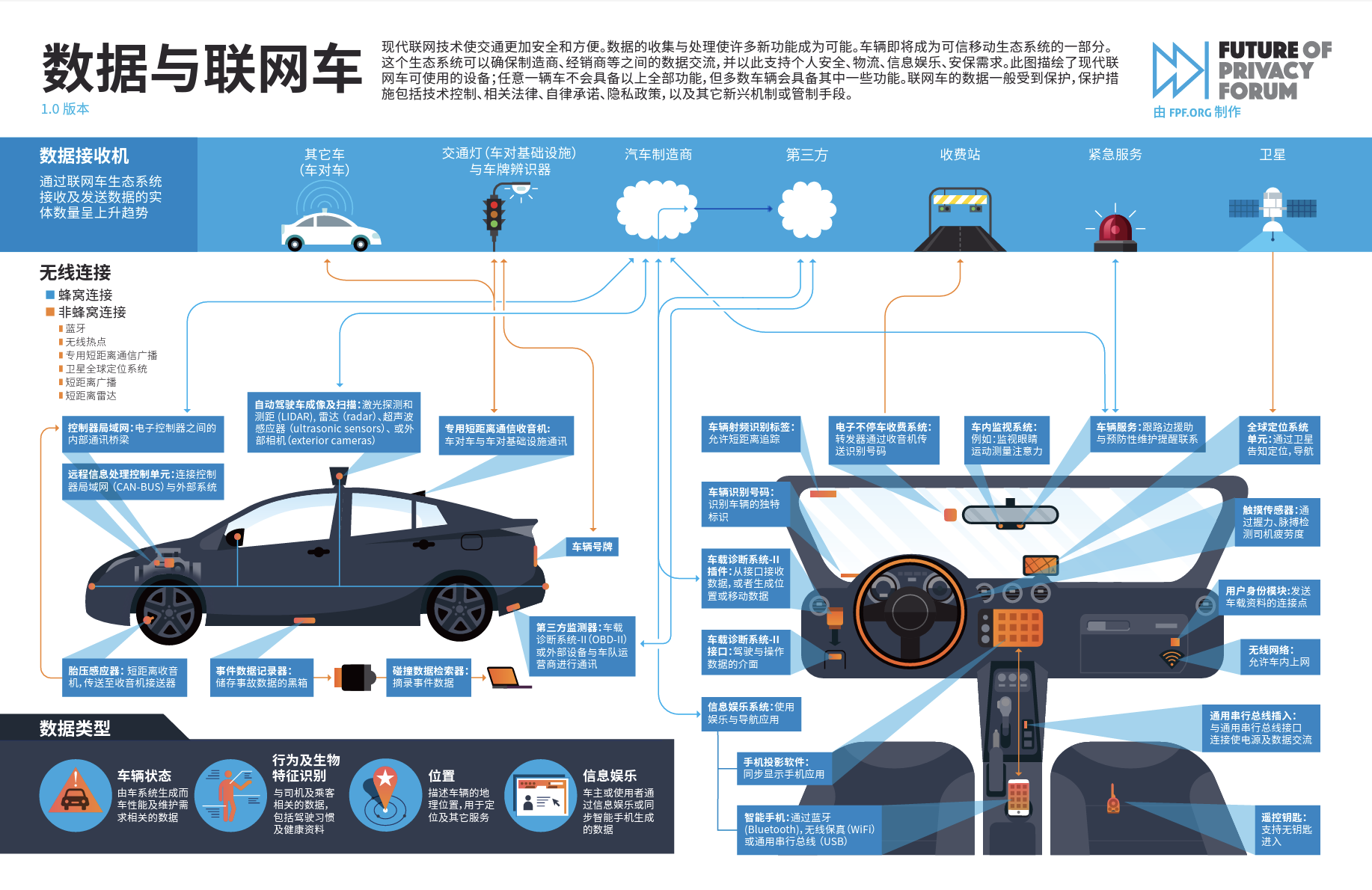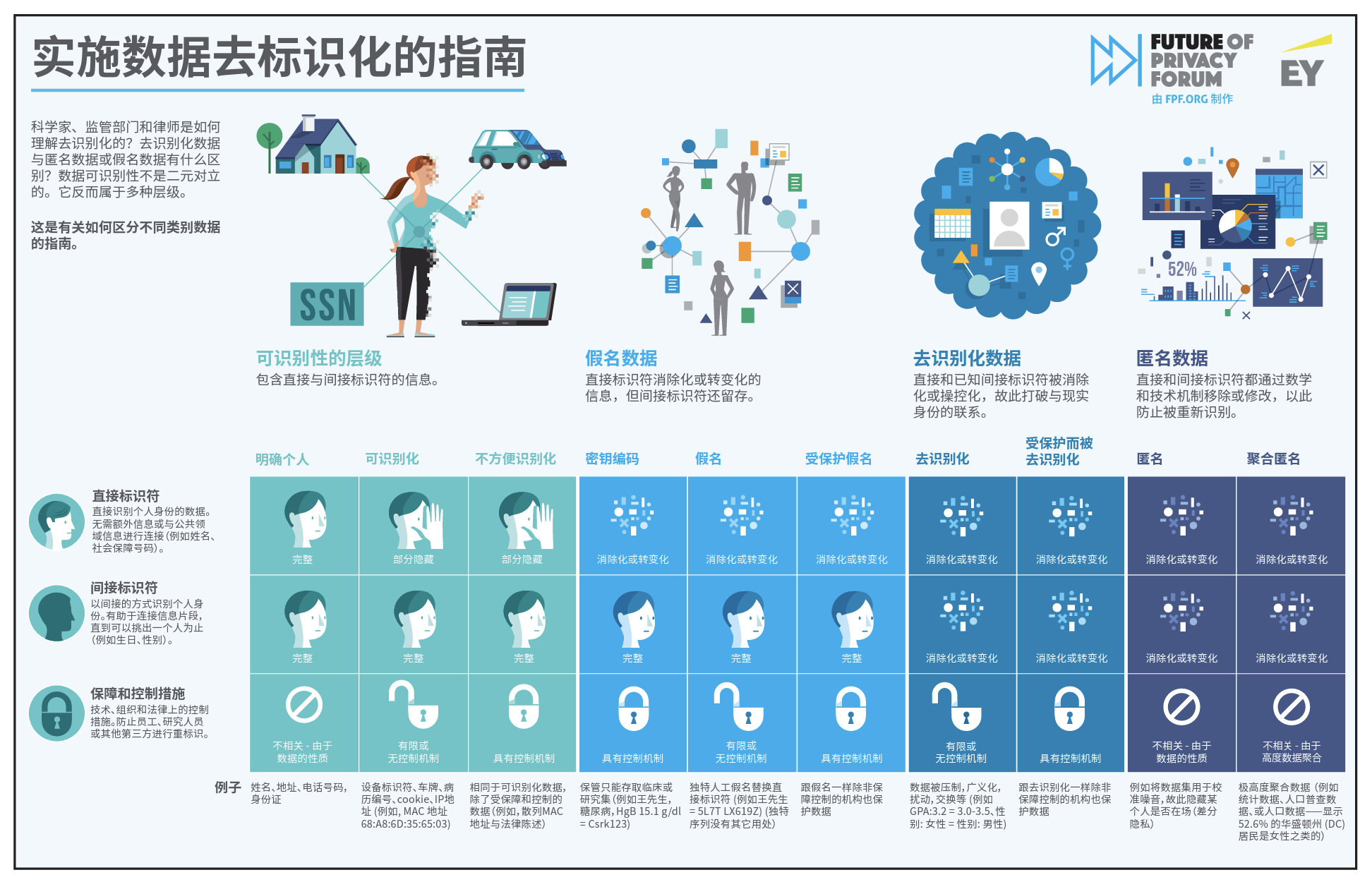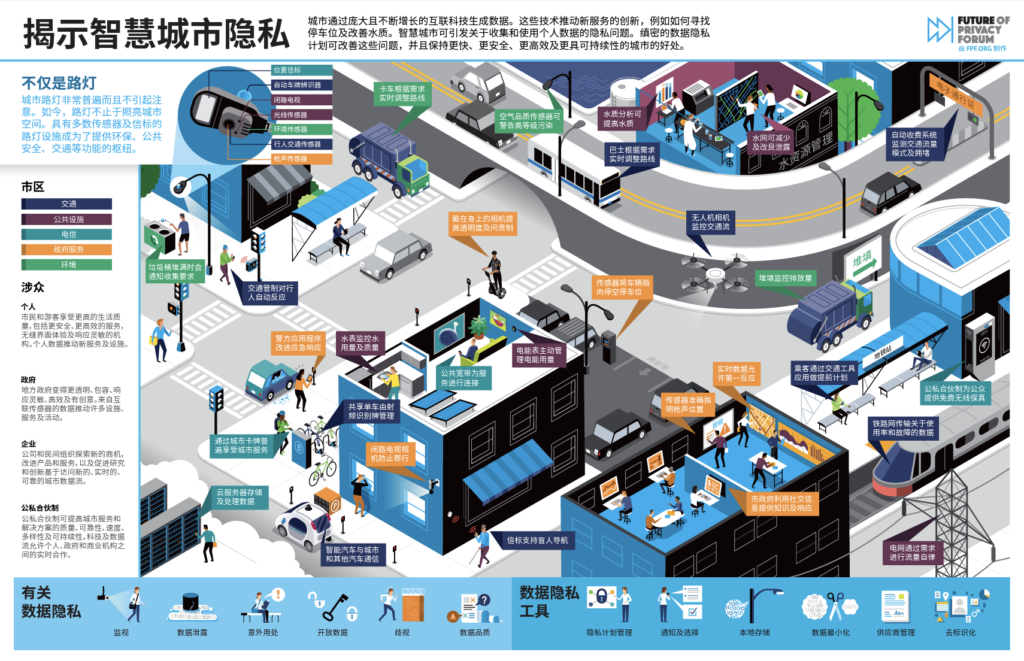FPF Launches Infographics in Chinese
As FPF’s work expands to include an international audience, we are pleased to relaunch FPF’s popular infographics in various languages. Because conversations around data protection have become more global, the need for high-quality information and new forms of communication in different languages continues to increase.
The infographics translation project aims to help FPF provide a more inclusive and diverse platform for stakeholders to engage with colleagues and experts across the world and to better navigate the most complex issues and developments in data protection. Previously, the Israel Tech Policy Institute (ITPI) translated some FPF infographics into Hebrew, an effort that provided the groundwork for FPF to target other languages and regions around the world.
The Chinese translation of these infographics was led by Nanda Min Htin and Hunter Dorwart. FPF APAC has translated three infographics into Chinese: Data and the Connected Car, Data De-identification, and Smart Cities.
1. Data and the Connected Car
The infographic, “Data and the Connected Car,” describes the core data-generating devices and data flows in today’s connected vehicles. The infographic aims to help consumers, businesses, and regulators understand the emerging data ecosystems that underlie this incredibly dynamic and complex industry.

2. Data De-Identification
The Data De-Identification infographic highlights complex issues around what constitutes personal information, the scope and possibility of de-identification, and divergences in approaches to the categories of de-identification. This infographic aims to provide stakeholders with an overview of various concepts, methods, and practical examples of de-identification.

3. Smart Cities
This infographic–Shedding Light on Smart City Privacy–is meant to help citizens, companies, and other stakeholders understand the technologies that create and facilitate smart city and smart community projects. It highlights the wide range of connected technologies and services in today’s cities and provides important context to these new technologies and services, particularly the privacy concerns emanating from this complex ecosystem.

